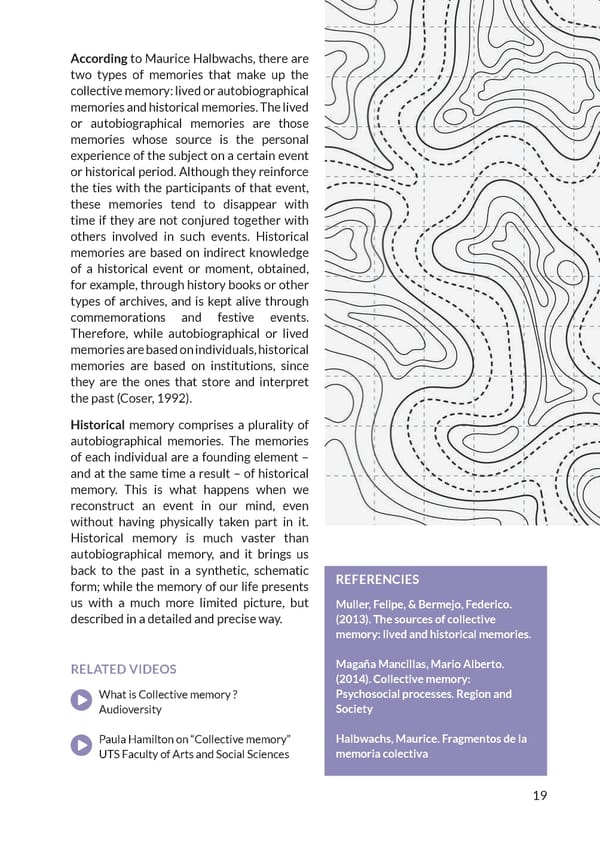According to Maurice Halbwachs, there are two types of memories that make up the collective memory: lived or autobiographical memories and historical memories. The lived or autobiographical memories are those memories whose source is the personal experience of the subject on a certain event or historical period. Although they reinforce the ties with the participants of that event, these memories tend to disappear with time if they are not conjured together with others involved in such events. Historical memories are based on indirect knowledge of a historical event or moment, obtained, for example, through history books or other types of archives, and is kept alive through commemorations and festive events. Therefore, while autobiographical or lived memories are based on individuals, historical memories are based on institutions, since they are the ones that store and interpret the past (Coser, 1992). Historical memory comprises a plurality of autobiographical memories. The memories of each individual are a founding element – and at the same time a result – of historical memory. This is what happens when we reconstruct an event in our mind, even without having physically taken part in it. Historical memory is much vaster than autobiographical memory, and it brings us back to the past in a synthetic, schematic REFERENCIES form; while the memory of our life presents us with a much more limited picture, but Muller, Felipe, & Bermejo, Federico. described in a detailed and precise way. (2013). The sources of collective memory: lived and historical memories. RELATED VIDEOS Magaña Mancillas, Mario Alberto. (2014). Collective memory: What is Collective memory ? Psychosocial processes. Region and Audioversity Society Paula Hamilton on “Collective memory” Halbwachs, Maurice. Fragmentos de la UTS Faculty of Arts and Social Sciences memoria colectiva 19
 MemoryHandbook new Page 18 Page 20
MemoryHandbook new Page 18 Page 20